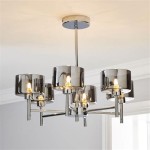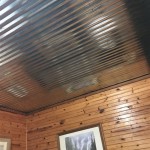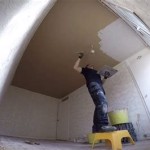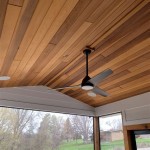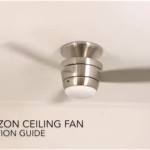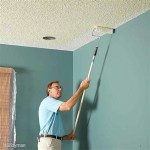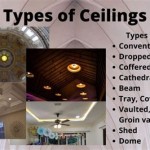The Multifaceted Benefits and Cost Considerations of Installing Floor-to-Ceiling Windows
Floor-to-ceiling windows, characterized by their expansive glass panels that stretch vertically from the floor to the ceiling, represent a significant architectural design choice. These windows offer a unique aesthetic and a range of functional benefits that can enhance the living experience within a space. However, alongside these advantages, the installation of floor-to-ceiling windows also involves considerable cost considerations that must be carefully evaluated before proceeding with such a project. This article aims to explore the various benefits associated with floor-to-ceiling windows while also providing a detailed overview of the potential costs involved.
Enhanced Natural Light Ingress and its Psychological Impact
One of the most compelling benefits of floor-to-ceiling windows is the substantial increase in natural light that permeates the interior space. Traditional windows, due to their smaller size and limited reach, often restrict the amount of sunlight entering a room. Floor-to-ceiling windows, conversely, maximize light penetration, effectively illuminating the entire area with natural daylight. This abundance of natural light has several positive psychological and physiological effects. Studies have shown that exposure to natural light can improve mood, reduce stress, and enhance overall well-being. Natural light helps regulate the body's circadian rhythm, promoting better sleep patterns and increased alertness during daytime hours.
Furthermore, increased natural light can contribute to a more vibrant and welcoming atmosphere within a home or office. The natural color spectrum of sunlight renders colors more accurately, making the interior space feel more alive and aesthetically pleasing. The elimination or reduction of reliance on artificial lighting translates into energy savings, leading to lower electricity bills and a reduced carbon footprint. Interior spaces bathed in natural light often feel larger and more open, creating a sense of spaciousness and freedom.
From a design perspective, natural light enhances the textural qualities of materials within the room. It highlights the nuances of wood grain, the sheen of fabrics, and the variations in paint colors, adding depth and visual interest to the overall aesthetic. The dynamic nature of natural light, which changes throughout the day and seasons, keeps the interior environment constantly evolving, preventing it from feeling static or monotonous.
Panoramic Views and Connection to the Outdoors
Floor-to-ceiling windows offer unparalleled panoramic views of the surrounding environment. Unlike standard windows that frame a limited portion of the landscape, floor-to-ceiling windows create a seamless visual connection between the interior and exterior, effectively blurring the boundaries between the two. This expansive view can be particularly appealing in locations with scenic vistas, such as properties overlooking mountains, oceans, or lush landscapes.
The connection to the outdoors facilitated by these windows goes beyond mere visual enjoyment. It fosters a sense of connection with nature, which has been shown to have numerous therapeutic benefits. Viewing natural landscapes can reduce stress levels, lower blood pressure, and improve concentration. The ability to observe the changing seasons, the movement of clouds, and the activities of wildlife can provide a sense of peace and tranquility, enriching the overall living experience.
For properties located in urban environments, floor-to-ceiling windows can offer captivating views of the cityscape, showcasing architectural landmarks, bustling streets, and vibrant nighttime scenes. Even in less visually dramatic settings, these windows can provide a heightened awareness of the surrounding environment, connecting the interior space to the rhythms of the outside world.
Furthermore, floor-to-ceiling windows can enhance the sense of spaciousness within a room. By visually extending the interior space beyond the physical walls, they create an illusion of greater size and openness. This effect is particularly beneficial in smaller homes or apartments, where maximizing the perceived space is crucial for creating a comfortable and livable environment.
Aesthetic Appeal and Increased Property Value
The installation of floor-to-ceiling windows significantly enhances the aesthetic appeal of a property, both internally and externally. The sleek, modern design of these windows adds a touch of sophistication and elegance to the building’s facade, making it stand out from the surrounding structures. The expansive glass panels create a visually striking effect, conveying a sense of luxury and contemporary design.
Internally, floor-to-ceiling windows can transform the character of a room, creating a dramatic focal point that draws the eye and enhances the overall ambiance. The increased natural light and panoramic views contribute to a more visually appealing and inviting interior space. These windows can seamlessly blend with various architectural styles, from minimalist and modern to traditional and contemporary, adding a touch of sophistication to any design.
Beyond their aesthetic value, floor-to-ceiling windows can also increase the market value of a property. Potential buyers are often drawn to homes with abundant natural light, stunning views, and modern design elements. The installation of these windows is a significant upgrade that can make a property more desirable and competitive in the real estate market. The return on investment for floor-to-ceiling windows can be substantial, particularly in locations with desirable views or in neighborhoods where modern architectural features are highly valued.
Furthermore, the perceived quality and craftsmanship associated with floor-to-ceiling windows can elevate the overall perception of a property. The use of high-quality glass and framing materials demonstrates a commitment to quality and attention to detail, which can impress potential buyers and justify a higher asking price. The long-term durability and energy efficiency of modern floor-to-ceiling windows can also be a valuable selling point, appealing to buyers who are looking for a sustainable and cost-effective investment.
Cost Considerations of Floor-to-Ceiling Window Installation
While the benefits of floor-to-ceiling windows are considerable, the associated costs are a significant factor in the decision-making process. The overall cost of installing these windows can vary widely depending on several factors including the size and type of glass, the framing material, the complexity of the installation, and the geographic location. It is imperative to obtain detailed quotes from multiple contractors to gain a comprehensive understanding of the potential expenses.
The cost of the glass itself is a major component of the overall expense. Options range from standard tempered glass to more advanced options like low-E glass, which provides superior insulation and UV protection. Low-E glass, while more expensive upfront, can result in long-term energy savings, offsetting some of the initial cost. Other specialized glass options, such as impact-resistant glass for hurricane-prone areas or soundproof glass for noisy environments, can further increase the cost.
The framing material also plays a significant role in determining the overall cost. Common framing materials include wood, aluminum, vinyl, and fiberglass. Wood frames offer a classic aesthetic and good insulation but require regular maintenance to prevent rot and decay. Aluminum frames are durable and low-maintenance but lack the thermal insulation of wood. Vinyl frames are an affordable and energy-efficient option but may not be as aesthetically appealing as other materials. Fiberglass frames offer a combination of durability, energy efficiency, and aesthetic appeal but are typically more expensive than vinyl or aluminum.
The complexity of the installation can also significantly impact the cost. Installing floor-to-ceiling windows in a newly constructed building is generally less expensive than retrofitting them into an existing structure. Retrofitting may require modifications to the building's structure, such as reinforcing walls or altering existing window openings, which can add to the overall expense. The difficulty of accessing the installation site, such as in high-rise buildings or properties with limited access, can also increase the labor costs.
Beyond the initial installation costs, it is also important to consider the ongoing maintenance expenses associated with floor-to-ceiling windows. Regular cleaning is essential to maintain the clarity and appearance of the glass. Depending on the location and exposure of the windows, professional cleaning services may be required. The framing material may also require occasional maintenance, such as painting or sealing, to protect it from the elements. While modern floor-to-ceiling windows are designed to be durable and long-lasting, occasional repairs may be necessary to address issues such as cracked glass or damaged frames. Factoring in these long-term maintenance costs is crucial for accurately assessing the total cost of ownership.
Finally, it is essential to research local building codes and permit requirements before undertaking a floor-to-ceiling window installation project. Building codes may specify minimum energy efficiency standards, safety requirements, and structural considerations that must be met. Obtaining the necessary permits can add to the overall cost and timeline of the project. Failing to comply with building codes can result in fines, delays, or even the requirement to remove the windows, highlighting the importance of proper planning and execution.

Are Floor To Ceiling Windows Worth The Hype

Floor To Ceiling Windows Modernize

Are Floor To Ceiling Windows Worth The Hype

How Much Do Floor To Ceiling Windows Cost In 2025 Checkatrade

Floor To Ceiling Windows Key Insights Valley

Floor To Ceiling Windows Modernize

Are Floor To Ceiling Windows Worth The Hype

Floor To Ceiling Windows Are They In Or Out Pro Superior Construction

Floor To Ceiling Windows Are They In Or Out Pro Superior Construction

Floor To Ceiling Windows In The Ideas Costs Pros Cons Greenmatch Co
Related Posts

